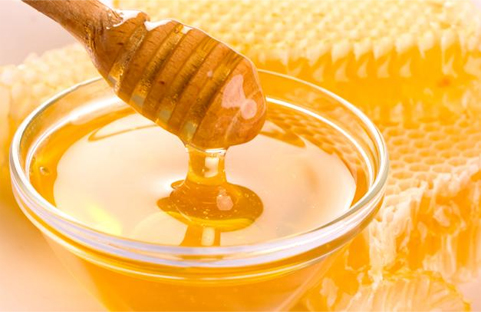استخدام أوككانويت السكروز استرات للسيطرة على الطفيلية عسل النحل عث فاروا ديستروكتور Use of Sucrose Octanoate Esters to Control the Parasitic Honey Bee Mite Varroa destructor
استخدام أوككانويت السكروز
استرات للسيطرة على الطفيلية
عسل النحل عث فاروا ديستروكتور
بواسطة والتر S. شيبارد، ميليسا غاردنر، سالي هاشر، بيث كاهكونن،
مارينا D. ميكسنر، جيمس P. سترانج
قسم علم الحشرات، جامعة ولاية واشنطن
بولمان
Use of Sucrose Octanoate
Esters to Control the Parasitic
Honey Bee Mite Varroa destructor
Use of Sucrose OctanoateWALTER S. SHEPPARD, MELISSA GARDNER, SALLY HASHER, BETH KAHKONEN,
MARINA D. MEIXNER, JAMES P. STRANGE
المقدمة
في جميع أنحاء الكثير من الأم وعرض مجموعة من
نحل العسل، أبيس مليفيرا L.، سوس الطفيلية فاروا
ديستروكتور أندرسون & ترويمان هو مدمرة للغاية
الآفات. ويصدق هذا بشكل خاص في المناطق المعتدلة من العالم،
حيث مستعمرات النحل غير المعالجة التي تنتشر مع V. ديستروكتور يمكن
يهلك خلال عامين (ديجونغ، 1990). تاريخيا، في المناطق
حيث يعتبر V. ديستروكتور مشكلة، السائد
وقد اشتملت نظم المعالجة على استخدام مختلف المبيدات الاصطناعية
أو الأحماض العضوية. ومع ذلك، فإن قدرة العث لتطوير
وقد أدت مقاومة مختلف المبيدات إلى الحاجة إلى تطوير
استراتيجيات بديلة للحفاظ على السيطرة الكافية.
تم الكشف عن V. ديستروكتور لأول مرة في نحل العسل التجاري
المستعمرات في الولايات المتحدة في عام 1987 (أنونيموس، 1987)، وخلق
حاجة لم يسبق لها مثيل لمنتجات سوس السيطرة. في الوقت الحاضر، هناك
هما مبيدان متاحان على نطاق واسع مسجلان لمعالجة الإصابات
من V. ديستروكتور في الولايات المتحدة واحدة من هذه، بيريثرويد الاصطناعية
فلوفالينات (Apistan®)، أصبحت متاحة قريبا بعد العث
تم الكشف عنها في الولايات المتحدة. ومع ذلك، مقاومة سوس ل فلوفالينات،
المعروف بالفعل من أوروبا (لوديساني، وآخرون 1995)، وضعت
بعد حوالي عقد من استخدام فلوفاليناتي في الولايات المتحدة (باكستر وآخرون،
1998؛ إلزن إت آل، 1998). ونتيجة لذلك، فإن مبيد الفوسفات العضوي،
كومافوس (تشيكميت + ®)، تم تسجيله في الولايات المتحدة
1998 بموجب بروتوكول استخدام طارئ (يعرف باسم المادة 18).
على الرغم من كومافوس لم يحصل بعد على التسجيل الكامل من قبل
الولايات المتحدة الأمريكية، وبعض السكان V. ديستروكتور في أوروبا والولايات المتحدة
وقد وضعت بالفعل مقاومة لهذا المركب (سبيفيكو وآخرون
آل 2001، إلزن أند ويستيرفيلت، 2002).
تتزامن مع محاولات مستمرة للحفاظ على المواد الكيميائية الفعالة
تدابير مكافحة، كانت هناك جهود لاستيراد أو إنتاج
تحسين مخزون نحل العسل. و أوسدا-أرس المستوردة، اختبار و
سلالة من نحل العسل من الشرق الأقصى روسيا ذلك
يظهر تحسن التسامح مع V. ديستروكتور (رينديرر وآخرون 1999،
2001). وبالمثل، فإن سلالة أونس-أرس من نحل العسل (سمر)
تم اختيارها لقمع سمة الاستنساخ سوس مؤخرا
صدر لمنتجي الملكة الامريكية. المتاحة تجاريا
إصدارات من هذه السلالات الجديدة من النحل توفر بعض تحسين
مقاومة V. ديستروكتور، على الرغم من أن المعالجة الكيميائية بشكل عام
لا تزال هناك حاجة لمنع فقدان المستعمرة. بالإضافة إلى الجينية
واختيار نحل العسل، وأساليب ثقافية مختلفة، مثل الطائرات بدون طيار
وقد تم الإبلاغ عن محاصرة الحضنة للحد من مستويات سوس. على حد سواء
والتكاثر الانتقائي للنحل وتدابير الرقابة الثقافية
مما لا شك فيه أن تلعب دورا هاما في اعتماد النهائي ل
النهج المتكامل لإدارة الآفات (إيب) من قبل النحالين ل V.
المدمر. لأن الهدف من الإدارة المتكاملة للآفات هو تقليل عدد السكان
العث تحت مستويات الضارة، بدلا من القضاء على العث تماما،
المبيدات مع انخفاض الفتك إلى العث قد تكون مناسبة.
وميزة واضحة هي أن مثل هذه المركبات قد يكون
وانخفاض المخاطر على البشر والنحل كذلك.
كجزء من الجهود المبذولة لتطوير مركبات مكافحة الآفات التي هي
متوافق مع نهج إيب ل V. ديستروكتور في نحل العسل،
فإننا نبلغ هنا نتائج الاختبارات باستخدام مركب مسجل مؤخرا
للسيطرة على سوس، استرات السكروز أوكتانويت (أفا الكيميائية
فينتوريس، بورتسموث، نه). إسترات السكروز أوكتانويت (S.O.)
تنتمي إلى فئة من المركبات المعروفة باسم استرات السكر. هذه المركبات
لديها سلسلة الأحماض الدهنية تعلق على جزيء السكر، وإعطاء
لهم إلى حد ما “خصائص ديترجنتليك في الماء” (نيل وآخرون،
1994). يتم إنتاج استرات السكر بشكل طبيعي من قبل أوراق بعض
النباتات وكان الاعتراف الصفات مبيدات الآفات التي
أدى إلى الجهود الأصلية لتطوير المواد لاستخدامها من قبل الزراعية
المزارعين. وقد ثبت استرات السكر لتكون فعالة
مبيدات الآفات لعدد من أنواع الآفات، بما في ذلك المن، بسيلد،
تريبس والعناكب (بوتا وآخرون 1993، نيل وآخرون 1994، بوتيركا
أند سيفرسون 1995، ليو إت آل 1996؛ نوتنغهام إت آل 1996). هذه
ورقة تقارير نتائج بعض التجارب التي أجريت قبل
تسجيل لتقييم S.O. ل V. ديستروكتور السيطرة في نحل العسل
المستعمرات
Introduction
Throughout much of the native and introduced range of the
honey bee, Apis mellifera L., the parasitic mite Varroa
destructor Anderson & Trueman is a highly destructive
pest. This is especially true in temperate regions of the world,
where untreated honey bee colonies infested with V. destructor can
perish within two years (DeJong, 1990). Historically, in areas
where V. destructor is considered a problem, the predominant
treatment regimes have involved the use of various synthetic pesticides
or organic acids. However, the ability of the mite to develop
resistance to various pesticides has led to a need to develop
alternate strategies to maintain adequate control.
V. destructor was first detected in commercial honey bee
colonies in the US in 1987 (Anonymous, 1987), creating an
unprecedented need for mite control products. At present, there
are two widely available pesticides registered to treat infestations
of V. destructor in the U.S. One of these, the synthetic pyrethroid
fluvalinate (Apistan® ), became available soon after mites were
detected in the US. However, mite resistance to fluvalinate,
already known from Europe (Lodesani, et al. 1995), developed
after about a decade of fluvalinate use in the US (Baxter et al,
1998; Elzen et al, 1998). As a result, an organophosphate pesticide,
coumaphos (Checkmite +®), was registered in the U.S. in
1998 under an emergency use protocol (known as Section 18).
Although coumaphos has yet to receive full registration by the
U.S. -EPA, some V. destructor populations in Europe and the US
have already developed resistance to this compound (Speafico et
al 2001, Elzen and Westervelt, 2002).
Coincident with ongoing attempts to maintain effective chemical
control measures, there have been efforts to import or produce
improved honey bee stocks. The USDA-ARS imported, tested and
released a strain of honey bees from far eastern Russia that
exhibits improved tolerance to V. destructor (Rinderer et al 1999,
2001). Similarly, a USDA-ARS strain of honey bees (SMR)
selected for the trait suppression of mite reproduction was recently
released to U.S. queen producers. The commercially available
versions of these new strains of bees provide some improved
resistance to V. destructor, although chemical treatment is generally
still required to prevent colony loss. In addition to genetic
selection of honey bees, various cultural methods, such as drone
brood trapping, have been reported to reduce mite levels. Both
selective breeding of bees and cultural control measures will
undoubtedly play an important role in the eventual adoption of an
Integrated Pest Management (IPM) approach by beekeepers for V.
destructor. Because the goal of IPM is to reduce the population of
mites below damaging levels, rather than to eliminate mites completely,
pesticides with lower lethality to the mites may be suitable.
An obvious advantage is that such compounds may have
lower risks to humans and bees as well.
As part of the effort to develop pest control compounds that are
compatible with an IPM approach for V. destructor in honey bees,
we report here the results of tests using a recently registered compound
for mite control, sucrose octanoate esters (AVA Chemical
Ventures, Portsmouth, NH). Sucrose octanoate esters (S.O.)
belong to a class of compounds known as sugar esters. These compounds
have a fatty acid chain attached to a sugar molecule, giving
them somewhat “detergentlike properties in water” (Neal et al,
1994). Sugar esters are produced naturally by the leaves of some
plants and it was the recognition of their pesticidal qualities that
led to the original efforts to develop the material for use by agricultural
growers. Sugar esters have been shown to be effective
pesticides for a number of pest species, including aphids, psyllids,
thrips and spider mites (Buta et al 1993, Neal et al 1994, Puterka
and Severson 1995, Liu et al 1996; Nottingham et al 1996). This
paper reports the results of some of the trials performed prior to
registration to evaluate S.O. for V. destructor control in honey bee
colonies




